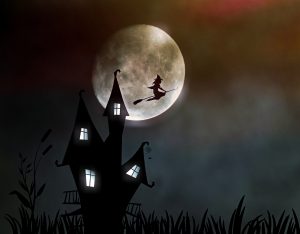Are you participating in any Halloween activities that stigmatize individuals on the spectrum? Like all holidays, there are a variety of social activities and traditions that may be exclusionary or unwelcome to autistic individuals. (See this previous post for ways to make Halloween more inclusive for autistics). However, even more disappointing are the rituals and social activities people participate in that contribute to the stigma of those on the spectrum. Some of these traditions are so entrenched in our culture that many are unaware of their damaging connotations. This article examines the playful and harmful aspects of Halloween so interested readers can ensure they are celebrating the holiday appropriately and not contributing to ableist stigmas.
The “Criminally Insane”
There’s a lot of harmless traditions about Halloween: Haunted houses, ghosts, vampires, mythical monsters, Trick or Treating, or pumpkin carving, for example. However, a common association that crosses the line is the portrayal of the “criminally insane” or “insane” as scary, funny, or freakish. This common portrayal is dehumanizing to disabled people, contributing to a surviving stigma against them.
Haunted houses or insane asylum attractions featuring the “criminally insane” reference ableist assumptions about mentally disabled individuals that are deeply embedded in our culture. With mentally disabled people euthanized or hidden from public view for so many years, the disdain for them has survived too long. Autistic activist Lydia Brown writes in their blog, “The attitude that leads otherwise decent people to believe that there is nothing wrong or problematic with featuring “the criminally insane” in a haunted house attraction is one deeply rooted in and perpetuated by an ableism so pervasive in society that it even taints disability rights movements.” Even if conscious, active stereotyping or judging isn’t taking place, Halloween often still brings to the surface some of these damaging implicit beliefs.
Another problem with the inaccuracy of this portrayal, Brown explains, is that it overshadows the sometimes violent victimization disabled individuals experience. Brown states that disabled people are more likely to be targeted as victims of violent crime rather than engage in violent behaviors, and “The ableism that perpetuates this harmful myth does a disservice to people with mental health and psychiatric disabilities twice over. It wrongfully insinuates that they are more likely to commit violent crimes–thereby allowing for the disturbing proposition of pre-emptive confinement and containment of these people that sounds suspiciously like Minority Report–and it allows society to ignore their needs when they are victimized by crime.”
Blogger Autodidactpoet explains that she has no problem with skeletons, monsters, zombies, ghosts or vampires, no matter how gory they come since these representations do not exploit the experiences of real people. But Halloween crosses the line with straight jackets and mad scientist costumes and haunted asylum portrayals. She writes in an article Halloween and Ableism: We can do better, “When we talk about asylums, we’re talking about institutions that housed people with disabilities, and in which real people, with real stories and real faces often times suffered horrific neglect and abuse. We’re talking about eugenics. We’re talking about people with disabilities of varying degrees being locked up for their entire lives, never receiving any education or real stimulation, and never being given the opportunity to move out into the world.”
What Can We Do?
Pay attention. This Halloween notice the different “spooky” representations around you. What has become so commonplace that people don’t notice or take offense to? Are you participating in anything that contributes to the stigmatization of the mentally disabled? Change starts small. Make sure you and your family aren’t participating in this stereotype. Discover to what extent the community you live in perpetuates this specific type of ableism in order to determine what ways your actions might make people around you more aware.
It’s important to read about the how ableism pervades society today so we can avoid unconscious participation and speak out where we see it in others. There’s plenty of ableism resources available online to start with. Most importantly, listen to what other disabled people are saying about ableism and where it presents itself. These are the people who are living the effects of it on a daily basis. Autistic activist Amy Sequenzia sums this up in her article “Why Disabled People Write About Ableism:” When I, and other disabled people write about ableism, we don’t do it because we like the topic. We do it because we DON’T like it but experience it every day. We do it because we are protesting the many ways we are objectified, dismissed, ignored and dehumanized.” Read about ableism. Pay attention to what disabled people are saying. Start there.
Additional Resources
Why Disabled People Write About Ableism
https://ollibean.com/disabled-people-ableism/
Halloween and Ableism: We Can Do Better
http://autodidactpoet.blogspot.com/2014/10/halloween-and-ableism-we-can-do-better.html
On Ableism and the Autistic Community
http://www.autistichoya.com/2012/07/on-ableism-in-autism-and-autistic.html
Halloween’s Ableism Problem: The Commercialization of Disability Oppression and Mental Health Stigma
http://www.autistichoya.com/2012/10/halloweens-ableism-problem.html
What is Ableism

